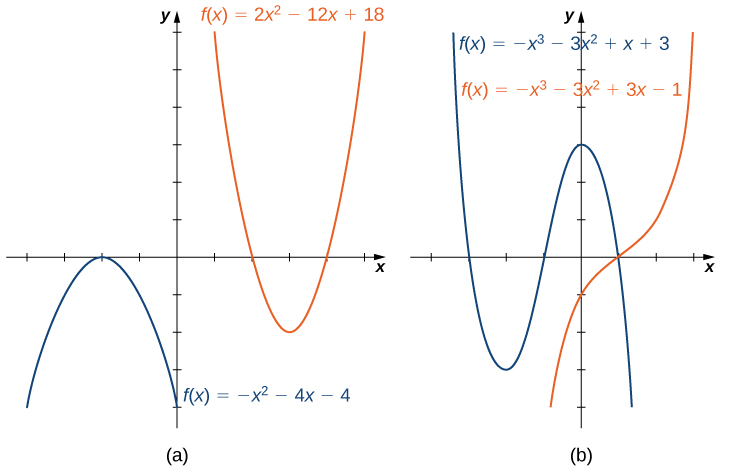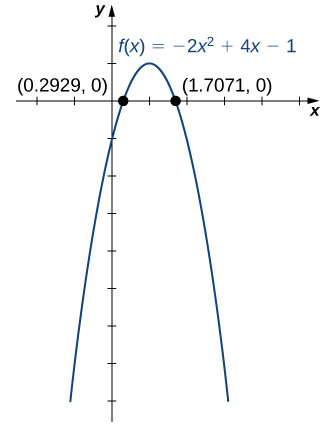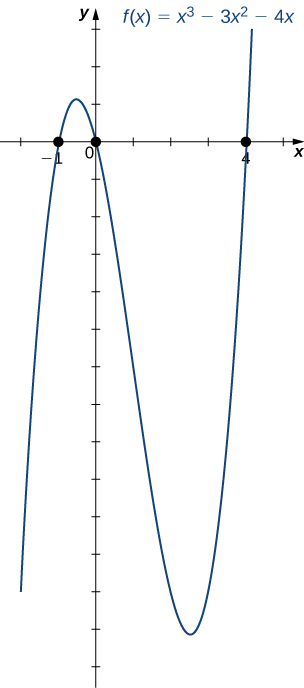| << Chapter < Page | Chapter >> Page > |
Now consider a cubic function If then as and as If then as and as As we can see from both of these graphs, the leading term of the polynomial determines the end behavior. (See [link] (b).)

Another characteristic of the graph of a polynomial function is where it intersects the -axis. To determine where a function intersects the -axis, we need to solve the equation for .n the case of the linear function the -intercept is given by solving the equation In this case, we see that the -intercept is given by In the case of a quadratic function, finding the -intercept(s) requires finding the zeros of a quadratic equation: In some cases, it is easy to factor the polynomial to find the zeros. If not, we make use of the quadratic formula.
Consider the quadratic equation
where The solutions of this equation are given by the quadratic formula
If the discriminant this formula tells us there are two real numbers that satisfy the quadratic equation. If this formula tells us there is only one solution, and it is a real number. If no real numbers satisfy the quadratic equation.
In the case of higher-degree polynomials, it may be more complicated to determine where the graph intersects the -axis. In some instances, it is possible to find the -intercepts by factoring the polynomial to find its zeros. In other cases, it is impossible to calculate the exact values of the -intercepts. However, as we see later in the text, in cases such as this, we can use analytical tools to approximate (to a very high degree) where the -intercepts are located. Here we focus on the graphs of polynomials for which we can calculate their zeros explicitly.
For the following functions a. and b., i. describe the behavior of as ii. find all zeros of and iii. sketch a graph of



Notification Switch
Would you like to follow the 'Calculus volume 1' conversation and receive update notifications?